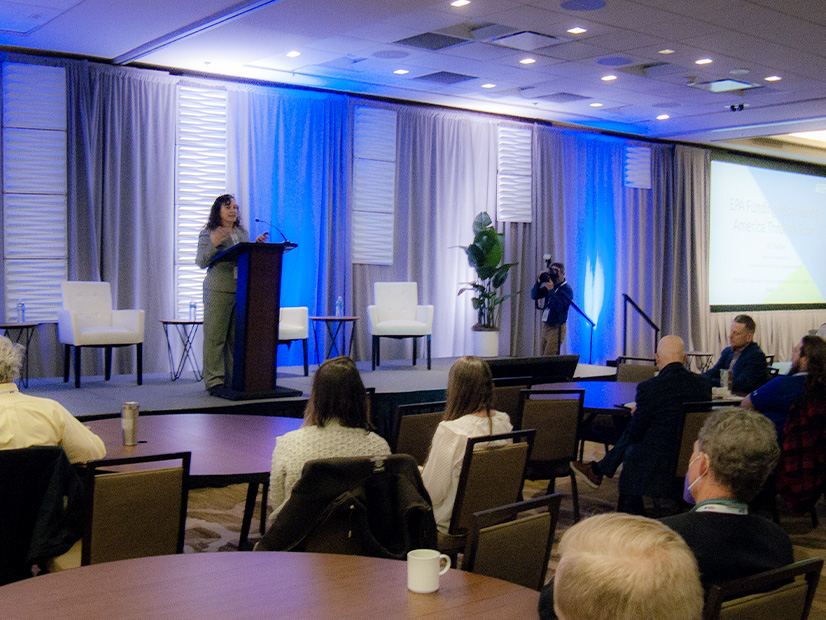
DENVER — EPA official KC Becker last week presented renewable industry stakeholders with new opportunities to access funding from the Bipartisan Infrastructure Law and the Inflation Reduction Act.
Becker, the agency’s administrator for the Mountains and Plains region, spoke at the Colorado Solar & Storage Association’s Mountain West Conference on March 1, breaking down EPA programs to fund decarbonization. She said that between the two “historic” pieces of climate legislation, the EPA will be distributing $100 billion in a variety of forms, but she focused on two programs equaling about $32 billion that aim to reduce emissions.
“[The] theme through all of these is that they’re really focused on cleaning up dirty sources of energy and replacing them with clean sources,” she said.
The Greenhouse Gas Reduction Fund makes up $27 billion of funding and is broken into two parts:
- the green bank portion, which aims to leverage private capital by distributing $20 billion to 15 private entities to disperse to emissions-reducing projects; and
- the Zero-emission Tech Fund, which is awarding 60 competitive grants totaling $7 billion to “states, tribes, municipalities and eligible nonprofit entities … directed specifically and almost exclusively at solar and storage.”
In selecting winning grants, the EPA will focus heavily on those deploying rooftop and community solar in environmental justice communities.
“This is a big climate effort; it’s also a big environmental justice effort,” Becker said. “The people who are most impacted by the climate crisis tend to be the most burdened with pollution, the least [able] to adapt to a changing climate, and that’s really where we want to be making our investments.”
The other $5 billion of funding will go to pollution-reduction grants to encourage states to decarbonize. Becker was especially excited to talk about those, saying “we were embargoed on [speaking about] this until this morning at 7:30, so this conference is very timely.”
The EPA plans to give states up to $3 million in non-competitive grants to create and submit their climate plans. The other $4.7 billion is slated for implementation of those climate plans, which will be dispersed through competitive grants. Becker again stressed the importance of considering disadvantaged communities when applying for the grants.
“The president has said in the deployment of all this new money … [that] whoever might have a little slice of this Inflation Reduction Act really has to meet the Justice40 goals. And that’s putting 40% of our investments or benefits to serve marginalized, underserved, overburdened communities,” she said.
Despite the deluge of federal funding, Becker has run into some policy makers who are resistant to the changes this money could bring. She said that after leaving the conference she would be calling the lawmakers in her region to encourage them to take advantage of this opportunity.
“Just in Colorado alone, through the Inflation Reduction Act, we estimate that it’s going to bring $13.2 billion of investment to large-scale clean power generation and storage,” Becker said, adding that “if they don’t want to call it climate pollution reduction money or greenhouse gas reduction money, it is economic development money.”
“One thing that I’ve been saying to the states in my region that tend to be more conservative is: If you don’t take this money, it’s going to go somewhere. It’s probably going to end up in California,” she said, drawing a laugh from the audience.

